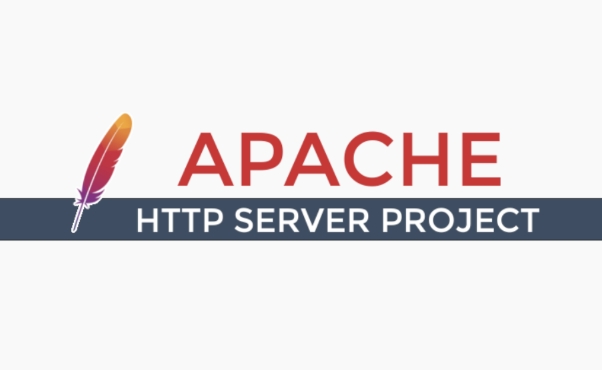Apache SSL certificate installation guide
Jul 31, 2025 am 07:50 AMFirst, confirm that the prerequisites have been met, and then install the SSL certificate as follows: 1. Copy the domain name certificate, private key and intermediate certificate to the /etc/ssl/certs/ and /etc/ssl/private/ directory respectively and set the private key permission to 600; 2. Run sudo a2enmod ssl on Debian/Ubuntu and restart Apache, install mod_ssl on CentOS/RHEL and restart the service; 3. Edit the Apache virtual host configuration file, add VirtualHost blocks containing SSLEngine on, SSLCertificateFile, SSLCertificateKeyFile and SSLCertificateChainFile, or merge the certificate files with a single path; 4. Run sudo apachectl configtest verify the configuration, and restart the Apache service after displaying Syntax OK; 5. Optional but recommended to configure HTTP to HTTPS redirection, which is implemented through VirtualHost or .htaccess; 6. Finally, check the lock icon in the browser, and use SSL Labs or SSLChecker tools to verify the installation integrity to ensure the correct certificate chain, validity period and security settings. After the entire process is completed, Apache will provide services securely through HTTPS.

Installing an SSL certificate on Apache (typically Apache HTTP Server, also known as httpd) is essential for securing your website with HTTPS. Below is a step-by-step guide to help you install an SSL certificate on Apache. This guide assumes you're using a Linux-based system (like Ubuntu, CentOS, or Debian) and already have Apache installed.

? Prerequisites
Before starting:
- You must own a domain name.
- Apache must be installed and running.
- OpenSSL must be installed (
sudo apt install opensslon Debian/Ubuntu orsudo yum install opensslon CentOS/RHEL). - You have obtained an SSL certificate (from a CA like Let's Encrypt, DigiCert, etc.).
You should have these files:

- Your domain certificate (eg,
your_domain.crt) - Private key (eg,
your_domain.key) - Intermediate certificate(s) from the CA (eg,
intermediate.crt) - Optionally, a CA bundle (often includes root intermediate)
1. Prepare SSL Certificate Files
Place your certificate files in a secure directory, typically:
/etc/ssl/
or

/etc/apache2/ssl/ # On Debian/Ubuntu /etc/httpd/ssl/ # On CentOS/RHEL
Example:
sudo cp your_domain.crt /etc/ssl/certs/ sudo cp your_domain.key /etc/ssl/private/ sudo cp intermediate.crt /etc/ssl/certs/
Make sure the private key is protected:
sudo chmod 600 /etc/ssl/private/your_domain.key sudo chown root:root /etc/ssl/private/your_domain.key
2. Enable Apache SSL Module
Ensure the SSL module is enabled:
On Debian/Ubuntu :
sudo a2enmod ssl sudo systemctl restart apache2
On CentOS/RHEL : The mod_ssl package must be installed:
sudo yum install mod_ssl # or on newer versions: sudo dnf install mod_ssl
Then restart Apache:
sudo systemctl restart httpd
3. Configure Apache Virtual Host for SSL
Edit your site's SSL configuration file.
On Debian/Ubuntu , edit:
/etc/apache2/sites-available/your_site.conf
or create a new one like your_site-ssl.conf .
On CentOS/RHEL , edit:
/etc/httpd/conf.d/your_site.conf
Add the following VirtualHost block:
<VirtualHost *:443>
ServerName www.yourdomain.com
DocumentRoot /var/www/html
SSLEngine on
SSLCertificateFile /etc/ssl/certs/your_domain.crt
SSLCertificateKeyFile /etc/ssl/private/your_domain.key
SSLCertificateChainFile /etc/ssl/certs/intermediate.crt
<Directory /var/www/html>
AllowOverride All
Require all granted
</Directory>
ErrorLog ${APACHE_LOG_DIR}/error.log
CustomLog ${APACHE_LOG_DIR}/access.log combined
</VirtualHost>? Note :
SSLCertificateFile: Your domain certificateSSLCertificateKeyFile: Your private keySSLCertificateChainFile: Intermediate certificate (optional if bundle is included in certificate file)- Some settings use
SSLCACertificateFilefor the full chain bundle.
Alternatively, you can combine your certificate and intermediate into one file:
cat your_domain.crt intermediate.crt > combined.crt
Then use:
SSLCertificateFile /etc/ssl/certs/combined.crt
and omit SSLCertificateChainFile .
4. Test Configuration and Restart Apache
Check for syntax errors:
sudo apachectl configtest
or
sudo apache2ctl configtest
If you see "Syntax OK", restart Apache:
On Ubuntu/Debian:
sudo systemctl restart apache2
On CentOS/RHEL:
sudo systemctl restart httpd
5. Redirect HTTP to HTTPS (Optional but Recommended)
To force all traffic to use HTTPS, edit your HTTP virtual host ( *:80 ) and add a redirect:
<VirtualHost *:80>
ServerName yourdomain.com
Redirect permanent / https://yourdomain.com/
</VirtualHost> Or use .htaccess if mod_rewrite is enabled:
RewriteEngine On
RewriteCond %{HTTPS} off
RewriteRule ^(.*)$ https://%{HTTP_HOST}%{REQUEST_URI} [L,R=301]6. Verify SSL Installation
Open a browser and visit:
https://yourdomain.com
Check for the padlock icon.
Use online tools like:
- http://ipnx.cn/link/288d7e4b1fa80acd699c8287ec363e12
- http://ipnx.cn/link/7ba9f9814b71251de63c083324ef94bb
These will verify certificate chain, expiration, and security settings.
? Tips
- Keep your private key safe and never share it.
- Renew certificates before they expire (Let's Encrypt certs last 90 days).
- Automate renewal with
certbotif using Let's Encrypt.
?? Bonus : Use Certbot (Let's Encrypt) for automatic setup:
sudo certbot --apache -d yourdomain.comIt handles certificate issue, configuration, and auto-renewal.
That's it. Your Apache server should now be securely serving content over HTTPS. Just make sure to monitor expiration dates and keep your server updated.
The above is the detailed content of Apache SSL certificate installation guide. For more information, please follow other related articles on the PHP Chinese website!

Hot AI Tools

Undress AI Tool
Undress images for free

Undresser.AI Undress
AI-powered app for creating realistic nude photos

AI Clothes Remover
Online AI tool for removing clothes from photos.

Clothoff.io
AI clothes remover

Video Face Swap
Swap faces in any video effortlessly with our completely free AI face swap tool!

Hot Article

Hot Tools

Notepad++7.3.1
Easy-to-use and free code editor

SublimeText3 Chinese version
Chinese version, very easy to use

Zend Studio 13.0.1
Powerful PHP integrated development environment

Dreamweaver CS6
Visual web development tools

SublimeText3 Mac version
God-level code editing software (SublimeText3)

Hot Topics
 How to use Nginx to dynamically load and update SSL certificates
Aug 02, 2023 am 09:05 AM
How to use Nginx to dynamically load and update SSL certificates
Aug 02, 2023 am 09:05 AM
Overview of how to use Nginx to dynamically load and update SSL certificates: In the environment of the modern Internet, protecting the security of user data is crucial. Among them, using SSL/TLS certificates to encrypt communication with web servers is a common method. However, the traditional method requires manually modifying the Nginx configuration file and reloading the server, which will cause downtime for the website when the certificate is updated. This article will introduce how to use Nginx modules and scripts to dynamically load and update SSL certificates to improve network performance.
 A guide to installing and resolving common errors in Scipy libraries
Feb 18, 2024 am 10:53 AM
A guide to installing and resolving common errors in Scipy libraries
Feb 18, 2024 am 10:53 AM
Scipy library installation guide and common error solutions Introduction: Scipy is an open source library for Python scientific computing, providing a wealth of mathematical, scientific and engineering computing functions. It is built on the basis of the NumPy library and can handle some complex numerical calculation problems. This article will introduce the Scipy installation guide, provide solutions to some common errors, and provide specific code examples to help readers better understand and use Scipy. 1. Scipy library installation guide to install Python and pi
 Easily master the Pillow library installation method: guide sharing
Jan 17, 2024 am 08:56 AM
Easily master the Pillow library installation method: guide sharing
Jan 17, 2024 am 08:56 AM
The Pillow library is a very powerful image processing library in Python. It is developed based on PythonImagingLibrary (PIL) and is optimized and expanded on its basis. The Pillow library provides a wealth of image processing functions, which can process various types of image files, and perform image editing, merging, filter processing and other operations. This article will provide you with an installation guide for the Pillow library to help you easily master this powerful image processing tool. 1. Install P
 How to generate a MySQL SSL certificate using OpenSSL
Sep 09, 2023 pm 02:12 PM
How to generate a MySQL SSL certificate using OpenSSL
Sep 09, 2023 pm 02:12 PM
Introduction to how to use OpenSSL to generate a MySQL SSL certificate: MySQL is a widely used relational database system. It is very important to use the SSL (SecureSocketsLayer) protocol for encrypted communication in actual production environments. This article will introduce how to use the OpenSSL tool to generate a MySQL SSL certificate and provide corresponding code examples. Steps: Install OpenSSL: First, make sure you have OpenSSL installed on your computer
 Detailed steps to install Golang on Mac OS
Feb 25, 2024 pm 10:27 PM
Detailed steps to install Golang on Mac OS
Feb 25, 2024 pm 10:27 PM
Complete Guide to Installing Golang on MacOS Go language (Golang for short) is becoming more and more popular among developers as an emerging programming language. Its concise syntax and efficient performance make it the first choice for many people. If you are a MacOS user and want to install Golang on your computer and start learning and developing Go programs, then this article will provide you with a complete installation guide. Next, we will introduce the steps and specific code examples required to install Golang on MacOS.
 Usage steps: Install the Chinese language pack in Eclipse and change your IDE interface to Chinese
Jan 28, 2024 am 08:36 AM
Usage steps: Install the Chinese language pack in Eclipse and change your IDE interface to Chinese
Jan 28, 2024 am 08:36 AM
Eclipse Chinese Package Installation Guide: To change your IDE interface language to Chinese, specific code examples are required. Eclipse is an integrated development environment (IDE) widely used for developing Java applications. It provides a rich set of features and tools to help developers write, debug, and test code more efficiently. However, the default interface language of Eclipse is English, which may cause problems to some non-English native developers. Therefore, this article will introduce in detail how to install the Eclipse Chinese package and provide tools
 Step-by-step guide to installing Tomcat on Linux
Dec 29, 2023 am 09:08 AM
Step-by-step guide to installing Tomcat on Linux
Dec 29, 2023 am 09:08 AM
Introduction to Tomcat Installation Guide in Linux Environment Apache Tomcat is an open source JavaServlet container, also known as a Web server, used to execute Java servlets and JavaServerPages (JSP). In a Linux environment, installing and configuring Tomcat are very common tasks. This article will provide an installation guide for Tomcat, with specific code examples. InstallJavaDevelopment
 Installation guide for PythonPandas: easy to understand and operate
Jan 24, 2024 am 09:39 AM
Installation guide for PythonPandas: easy to understand and operate
Jan 24, 2024 am 09:39 AM
Simple and easy-to-understand PythonPandas installation guide PythonPandas is a powerful data manipulation and analysis library. It provides flexible and easy-to-use data structures and data analysis tools, and is one of the important tools for Python data analysis. This article will provide you with a simple and easy-to-understand PythonPandas installation guide to help you quickly install Pandas, and attach specific code examples to make it easy for you to get started. Installing Python Before installing Pandas, you need to first






